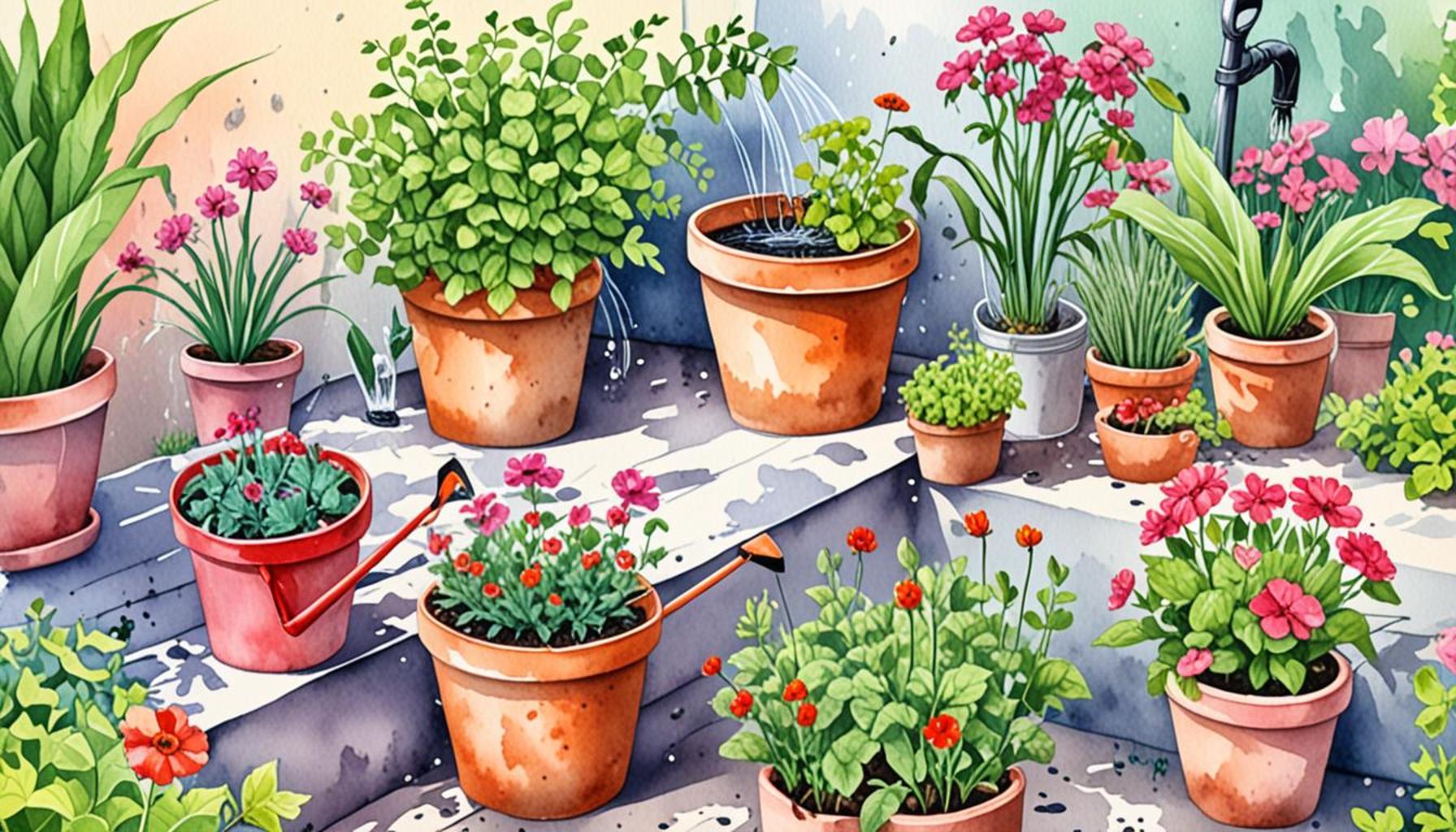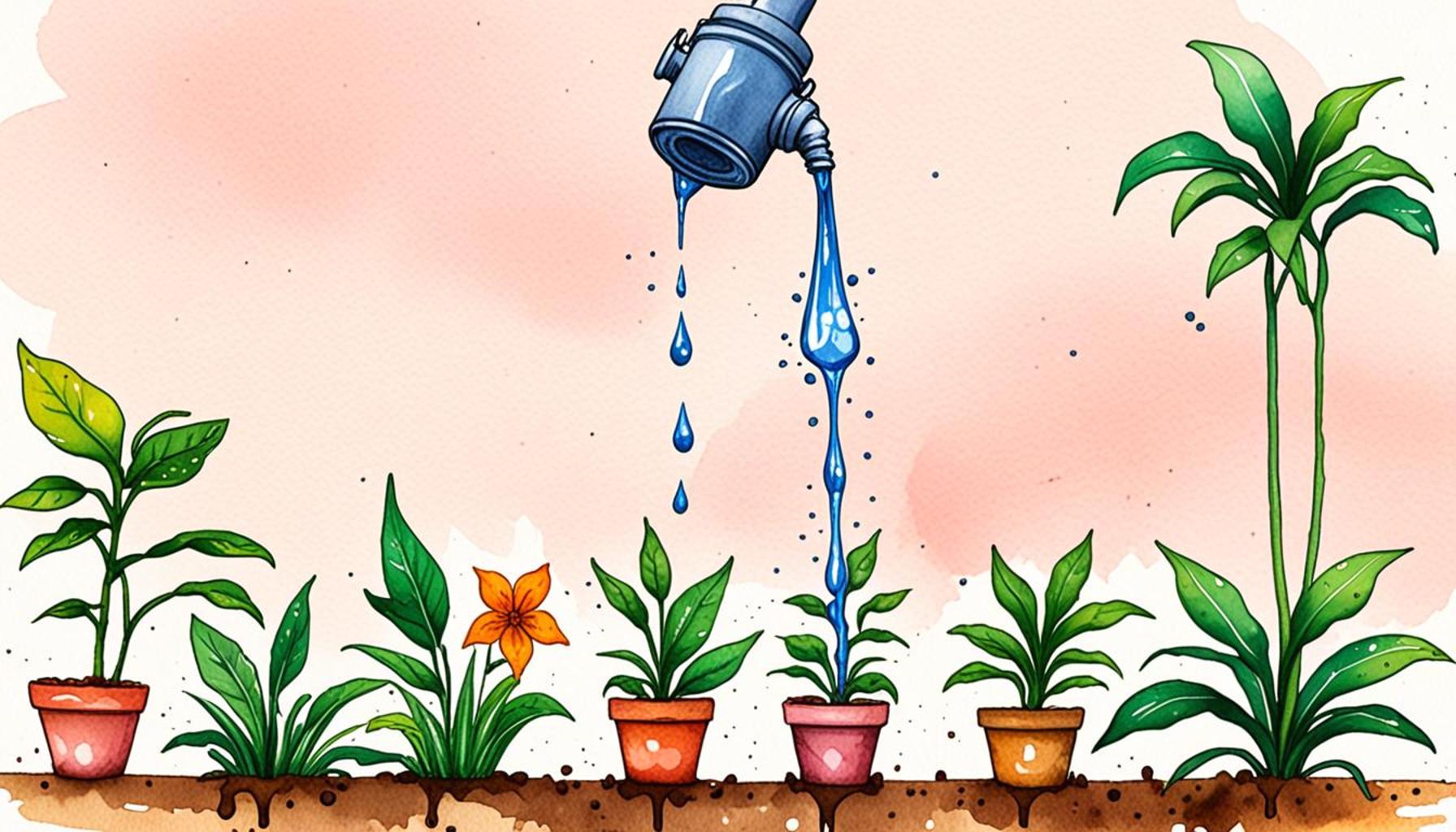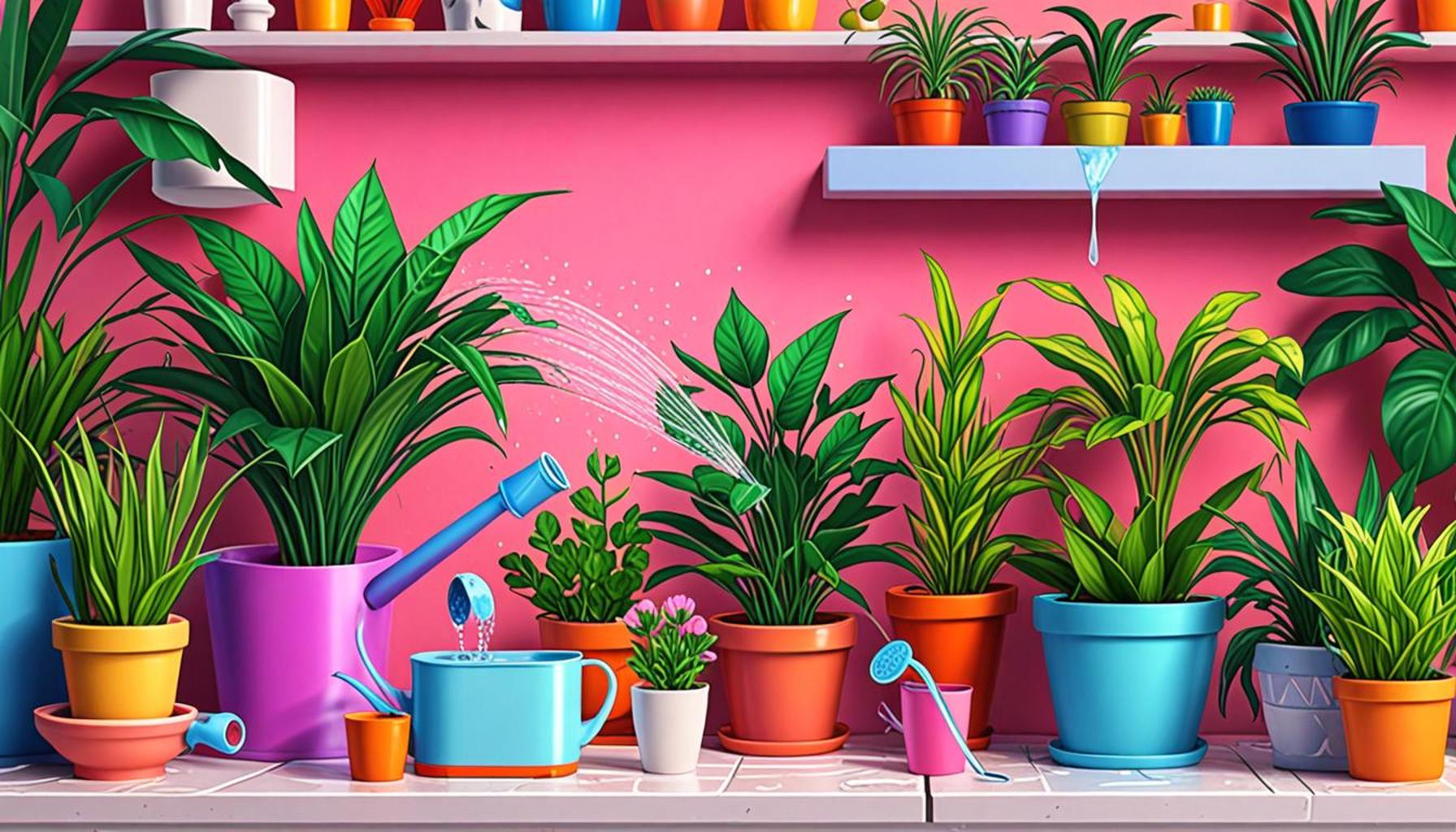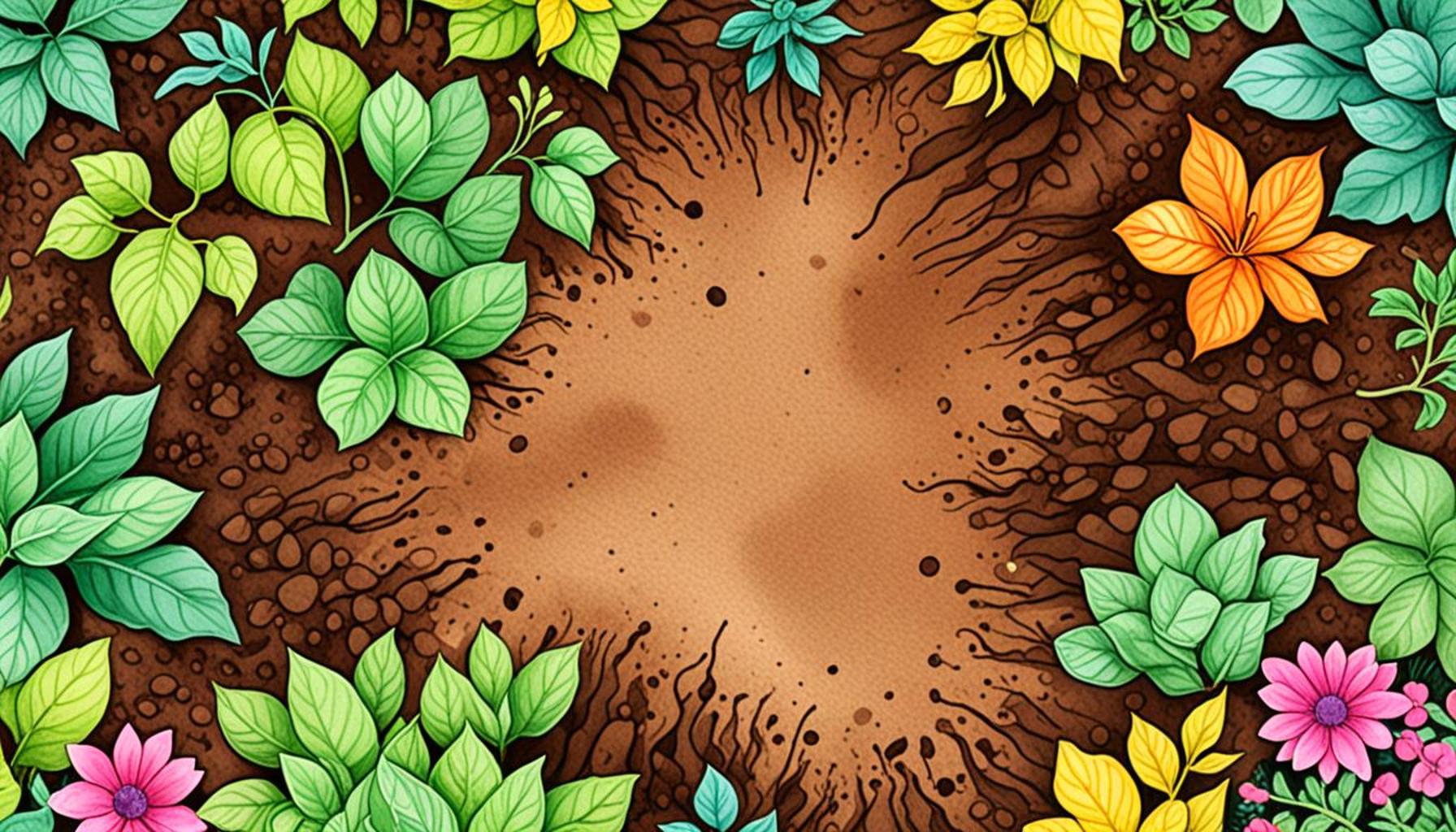Effective Tools and Methods for Irrigating Small Gardens

Transforming Your Garden with Smart Irrigation Solutions
Irrigation is crucial for maintaining healthy plants, especially in small gardens. As climate conditions fluctuate, the right tools can make all the difference in how effectively you water your plants. Discovering effective tools and methods can elevate your gardening experience and promote lush growth. While gardening can be a deeply rewarding hobby, finding the best way to manage water usage is paramount to the success of your plants.
Small gardens often require innovative irrigation strategies to conserve water and ensure every plant thrives. With space often at a premium, it’s essential to maximize every drop. Here are some key considerations to keep in mind:
- Water Conservation: Focus on tools that minimize waste. This can be achieved through various means, such as using systems that target the roots directly rather than applying water indiscriminately. Consider the installation of smart irrigation systems that adapt based on current weather conditions.
- Soil Health: Utilize methods that promote healthy root systems. Deep watering techniques encourage roots to grow deeper into the soil, which helps improve drought resistance. Maintaining a balanced pH and ensuring adequate nutrients in the soil can also make a significant difference.
- Plant Needs: Different plants have varying water requirements. For instance, succulents require far less water than leafy greens or flowering plants. Ensure you understand the specific needs of each plant type to optimize irrigation efforts.
From drip irrigation systems that deliver water directly to the roots, to soaker hoses that provide gentle moisture, there are numerous options available. For instance, drip irrigation can reduce water usage by up to 60% compared to traditional methods. This is particularly beneficial in regions facing drought or water restrictions.
Additionally, consider employing the following tools to enhance your irrigation setup:
- Rain Barrels: Collecting rainwater is a sustainable practice that not only conserves municipal water resources but also provides plants with naturally soft water, free from chlorine and other chemicals. Using rain barrels can cut down on your water bill while promoting environmental responsibility.
- Timers: Automating your watering schedule through timers helps ensure that your plants receive consistent care, even when your schedule does not allow for regular attention. Some advanced timers can even be controlled via smartphone apps.
- Moisture Sensors: These devices can help monitor soil moisture levels, ensuring that you are not over or under-watering. Integrating moisture sensors into your irrigation system can lead to healthier plants and reduced water waste.
By integrating these strategies, your small garden can thrive despite the challenges presented by weather variability and limited space. Embracing efficient irrigation not only boosts plant health but can also create beautiful, thriving green spaces that reflect your passion for gardening. Explore the world of smart irrigation tools to watch your garden flourish, making the most of every growing season!
DISCOVER MORE: Click here to learn about signs of infestation in your garden
Understanding Smart Irrigation Techniques
In the realm of small garden management, irrigation techniques play a pivotal role in both plant health and resource conservation. Gardeners must navigate the delicate balance of providing adequate moisture while avoiding waste. Implementing the right irrigation methods can lead to flourishing gardens, even in limited spaces. Here are some effective tools and methods that can transform your watering approach:
- Drip Irrigation Systems: These systems are a game-changer for small gardens. By delivering water directly to the soil at the root zone, drip irrigation minimizes evaporation and runoff. This method can reduce water usage by up to 60% compared to traditional watering techniques, making it a sustainable choice for both your plants and the environment.
- Soaker Hoses: Another efficient option, soaker hoses slowly release water along their length, providing a gentle watering solution that allows moisture to seep into the soil. They are particularly effective for rows of plants, ensuring that the water reaches the roots without pooling on the surface.
- Sprinklers with Timer Controls: While less water-efficient, using sprinklers with built-in timer settings can help automate the daily watering routine. Select models designed for small areas to avoid oversaturation, and adjust the timing based on weather conditions for optimal plant care.
Understanding the specific needs of your plants is essential in determining which irrigation method to adopt. For example, deep watering is beneficial for plants with extensive root systems, encouraging them to reach deeper moisture stores and improving drought resistance. Conversely, shallow-rooted plants may benefit from more frequent, lighter watering.
Additionally, embracing technology can enhance your irrigation strategy. Smart irrigation controllers utilize weather data to adjust watering schedules automatically, ensuring your garden receives just the right amount of moisture based on temperature, humidity, and soil conditions. This not only promotes plant health but also conserves water, making it an eco-friendly option.
For those interested in sustainability, integrating rain barrels into your irrigation setup can be a rewarding endeavor. Rain barrels capture runoff from your home’s roof, allowing you to store and use this natural resource for your garden. This practice not only lessens your reliance on municipal water but also provides your plants with chemical-free water, a boon for their overall health.
Moreover, establishing a solid foundation of healthy soil can undoubtedly impact the success of your irrigation efforts. Regularly testing your soil for pH and nutrient levels can help you identify any necessary amendments for optimal plant growth. Well-balanced soil retains moisture better and supports healthier root systems, making your irrigation efforts more effective.
With these tools and techniques at your disposal, you’re equipped to make informed decisions about your small garden’s irrigation needs. As you explore different methods, keep your garden’s unique requirements in mind, tailoring your approach to achieve optimal growth while conserving water resources.
Effective Tools and Methods for Irrigating Small Gardens
In the pursuit of maintaining a lush, thriving garden, understanding the various irrigation systems and tools available is essential. Home gardeners are on the lookout for methods that save both time and water, ensuring their small green havens flourish without excessive effort. The diversity of irrigation methods has evolved, and for gardeners with limited space, several outstanding options stand out.
| Irrigation Method | Advantages |
|---|---|
| Drip Irrigation | Delivers water directly to the roots, minimizing evaporation and runoff. |
| Soaker Hoses | Provides an efficient, low-pressure system that ensures even moisture distribution. |
| Rain Barrels | Utilizes harvested rainwater, promoting sustainability while reducing water bills. |
| Automatic Timers | Allows for scheduled watering, ensuring plants receive adequate moisture without daily oversight. |
Each of these methods provides unique benefits suited for small gardens, enabling garden enthusiasts to nurture their plants effectively. By innovatively employing modern irrigation techniques, one can ensure optimal growth and sustainability in their gardening endeavors. Explore these options further to discover how to elevate your garden’s health while conserving precious resources.
DISCOVER MORE: Click here to learn how to create the perfect raised bed garden
Maximizing Efficiency with Innovative Solutions
As the push for sustainable gardening practices grows, small garden enthusiasts are increasingly turning to innovative tools and methods that enhance both efficiency and effectiveness. One method that has gained traction in recent years is the use of automatic drip emitters. These devices can be adjusted to deliver varying amounts of water to individual plants, catering to their specific hydration needs. With a range of options available, from standard emitters to ones that slow down the release during dry spells, gardeners can ensure that every plant receives just the right amount of moisture.
Furthermore, feeding your plants right directly correlates with effective watering. By utilizing fertigation systems, which combine fertilization and irrigation processes, you can deliver nutrients alongside water directly to the roots. This method not only enhances nutrient uptake but also prevents water wastage since both water and fertilizer are applied precisely where needed, maximizing your gardening efforts.
The Role of Mulching
Another powerful yet often undervalued tool in the small gardening arsenal is mulch. Applying a layer of organic mulch, such as wood chips or straw, can significantly improve soil moisture retention. This practice minimizes surface evaporation, regulates soil temperature, and suppresses weed growth, lessening the need for additional watering. According to gardening experts, a 2- to 4-inch layer of mulch can effectively reduce water loss by up to 50% in warmer climates.
When selecting mulch, consider the specific needs of your plants. For instance, shredded leaves work wonderfully for vegetable gardens, while bark chips are ideal for flower beds. Additionally, as mulch breaks down over time, it enriches the soil, providing a double benefit to your small garden.
Utilizing Water-Saving Techniques
For gardeners who are particularly conscious of water usage, adopting practices such as subsurface irrigation can be transformative. This technique involves burying irrigation tubes below the soil surface, allowing moisture to be released directly into the root zone. Subsurface systems reduce evaporation significantly and can be especially beneficial during dry seasons. Although this method may require a more substantial investment and planning, its water efficiency makes it a worthwhile consideration in the long run.
- Watering Can Techniques: For those who prefer a more hands-on approach, using a watering can with a narrow spout allows for precise watering. This method minimizes water loss and ensures that water reaches the plant roots directly without flooding the surrounding areas.
- Deep Root Watering Tools: These tools help direct water to the deeper layers of soil, especially beneficial for trees and shrubs. By encouraging deep root growth, these tools can make plants more resilient to drought.
Moreover, understanding local water ordinances can further enhance your irrigation practices. Many states in the U.S. impose watering restrictions during drought seasons, making it essential to be aware of these guidelines — and to adapt your watering schedules accordingly. Regularly monitoring rainfall and making adjustments to your irrigation practices can help you stay compliant while also supporting the health of your garden.
As you explore various irrigation methods, don’t forget to embrace drainage solutions. Installing simple devices like perforated pipe systems can prevent waterlogging, ensuring that your plants are never deprived of oxygen in the soil. By combining effective irrigation with proper drainage, you can create a thriving environment for your garden ecosystem.
With these advanced tools and methods, your small garden has the potential to become an oasis of health and productivity, all while using water resources wisely. By making informed choices and leveraging innovative technologies, you can transform your watering strategies into sustainable practices that benefit both your garden and the environment.
DON’T MISS: Click here to enhance your gardening skills
Conclusion
Advancements in the art of gardening have ushered in a new era of irrigation techniques that focus on both efficiency and sustainable practices. With the rise of tools such as automatic drip emitters, gardeners can now tailor their watering systems to meet the specific hydration needs of individual plants. This precision helps reduce overall water consumption, an essential factor considering that approximately 70% of global freshwater is used for agriculture. By utilizing such innovative techniques, even the smallest gardens can thrive while conserving this precious resource.
Fertigation systems, which combine fertilizer application with irrigation, enable nutrient delivery directly to plant roots. This technique not only saves time but also ensures that plants receive the right amount of nutrients precisely when they need them. For instance, in regions like California where agricultural demands are high, fertigation has become a go-to solution for maximizing crop yields without excessive fertilizer runoff.
Subsurface irrigation takes this a step further by placing water delivery systems beneath the soil surface, reducing evaporation and runoff while increasing efficiency. This method is particularly advantageous in arid regions or during summer months when evaporation rates are high.
The importance of mulching should not be underestimated. A layer of mulch can significantly help in retaining soil moisture, regulating temperature, and suppressing weeds, which all contribute to a healthier garden ecosystem. These benefits make mulching a vital strategy for gardeners in various climates across the United States.
Additionally, navigating local water regulations ensures that gardeners remain compliant while protecting nearby habitats. Understanding these regulations can help gardeners make more informed decisions regarding irrigation styles and water use, fostering a balance between garden maintenance and environmental stewardship.
The array of tools available to small gardening enthusiasts has expanded remarkably. From smart irrigation controllers that adapt to weather conditions to rainwater harvesting systems, the options are abundant. By experimenting with these varied approaches, gardeners can cultivate vibrant, productive spaces that reflect not only their personal style but also a commitment to sustainability. With the right combination of technology and natural methods, anyone can transform a small garden into a lush sanctuary that thrives efficiently.


